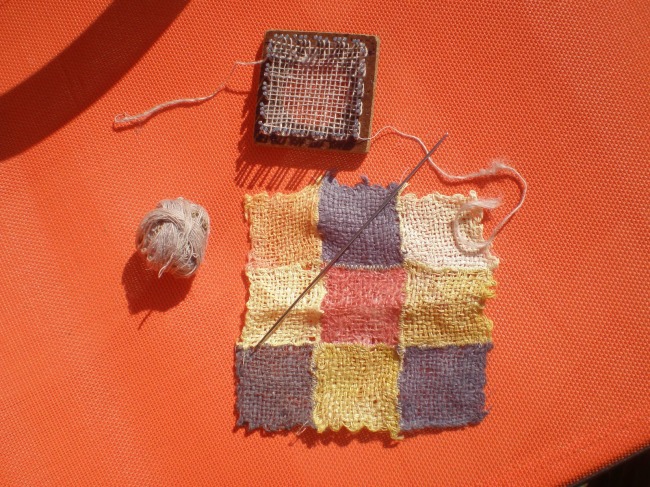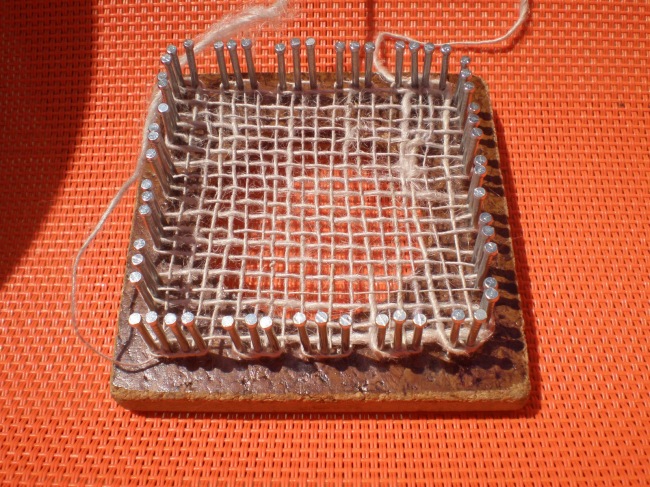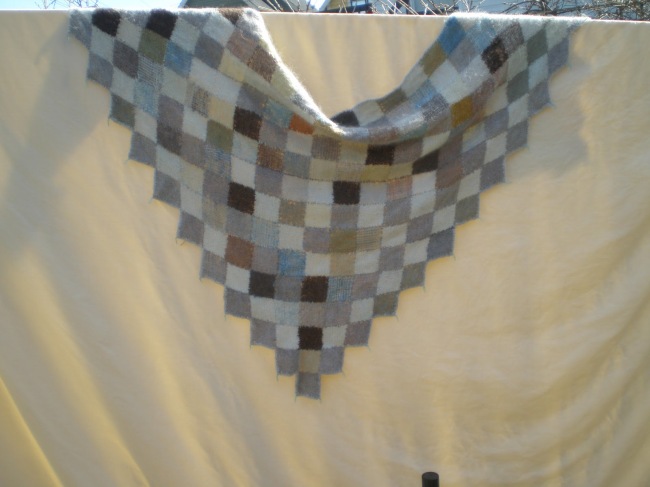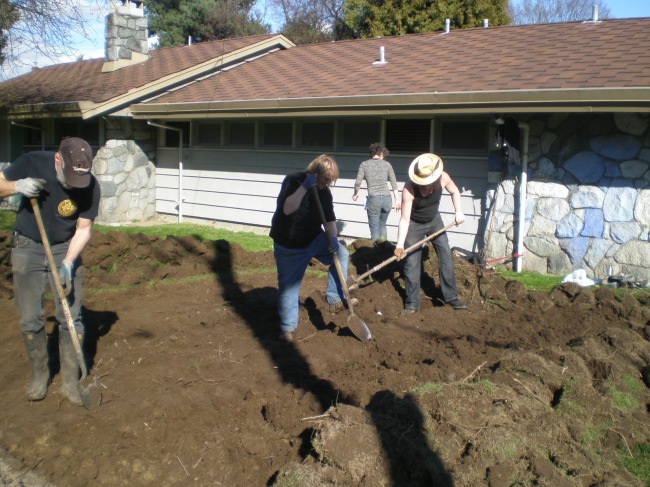Here’s a summary of what’s going on for anyone who wants to be part of the local linen revival.
We’re going to be growing flax this year at the Means of Production garden http://moparrc.com/, a garden I’ve annexed at the back of a rental property and a couple of Park Board sites around Vancouver. If you see a plot of lovely blue flowers at McLean Park or Aberthau – it’s a future linen shirt in bloom. We also have several people growing flax either at home or in their community garden plot, using this blog to tell them what to do and when to plant.
Flax was once grown all over BC, as far north as Bella Coola – we have the ideal climate for it. Families planted a small plot of it every few years to provide the material to make garments, bed sheets etc. As it’s such a hard wearing fibre, it wasn’t necessary to plant every year. Being able to process, spin and weave your own linens wasn’t an art, it was just what you had to do if you wanted something other than woollen underwear (scratchy!) and blankets.
Caitlin ffrench (knitter, weaver, spinner, dyer and much more) will be partnering with me to grow at MOP, and she’ll take the project forward in 2014 to grow more flax at Trillium Park and various other City pieces of land. Flax needs a 5 year rotation so she’ll be growing dye plants in between the flax years.
The flax processing equipment that we will be building this spring will be stored at the McLean field house until Trillium Park’s artist space is ready and will be available for anyone to use. If you want to grow some flax in your garden (it has such pretty flowers!) let me know. Flax seed from the store won’t work, it needs to be a specific fibre producing type (I can provide you with small amounts of Elektra flax seed if you come to the field house). You could grow some at home and use the processing equipment to make your own linen.
Some details on flax cultivation
Here’s the type of soil and site you’ll need:
- Location and moisture – flax likes to be shrouded in moisture during the
growing season. This isn’t usually a problem in Vancouver, but you may need to water the seedlings if we have a dry spell in spring.
- Location and wind – flax will rot if it falls over. You need to either grow it in a place where it’s sheltered from the wind (or animals walking through the plot) or put up a short fence. Willow or bamboo sticks put around the plot edge would work.
- Flax doesn’t like to be shaded by trees, or be in waterlogged areas.
Time line for growing flax and making linen
The time line is:
1.Prepare the seed bed by removing weeds, and adding a layer of compost and bone meal for the potassium and phosphate needed to produce fibre. Don’t put any nitrogen based fertilizer on, as this makes weak stalks which will fall over (lodge). Best done right now, but at the very least by the end of March.
2.Rake the seed bed (and remove any extra weeds that have grown) just before planting. Seed planting will be in April/May depending on the temperatures. Watch this blog to see when we plant ours. Spread the seed by broadcasting (throwing it!). Firm the seeds in by pressing the rake head onto the soil over the entire plot (you can do this with your feet too).
3.If we get a dry spell during germination, the seeds will need water – again, watch this blog and I’ll tell you when/if that’s needed.
4.When the plants are 10cm high, weed the plot barefoot (so as not to damage the plants – they die if they get knocked over).
5. 90-100 days after germination the plants are in full flower..
6. 10 days after that you can harvest – more about that in the blog as we get closer to harvest time. You can follow along and harvest when we do……
So check out this blog for updates on the flax growing process. I’ll also be posting photos and details of how the building of the scutcher, brake machine and hackles are coming along.






